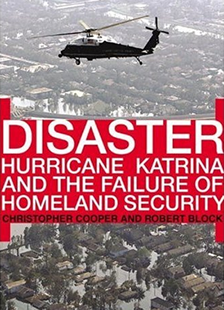
Why do we Plan?
This week, read Chapter 1, "The Perfect Storm," in Disaster: Hurricane Katrina and the Failure of Homeland Security. We will use this text as a case study throughout the semester. This is a well-written account of the disaster by two Wall Street Journal writers.
On March 1, 2003, FEMA became part of DHS. FEMA’s continuing primary mission is to reduce the loss of life and property and protect the nation from all hazards, including natural disasters, acts of terrorism, and other man-made disasters, by leading and supporting the nation in a risk-based, comprehensive emergency management system of preparedness, protection, response, recovery, and mitigation following any national incident (http://www.fema.gov/about/index.shtm). FEMA also initiates proactive mitigation activities, trains first responders, and manages the National Flood Insurance Program (NFIP).
Chapter 1, “The Perfect Storm”, sets the stage for us by providing some background on DHS, the DHS-FEMA relationship, the TOPOFF exercises, the Hurricane Pam exercise, bureaucracy, and some local Louisiana politics. As you read Chapter 1, focus on a few issues that are relevant to the case study of Katrina and to our overall discussion of planning:
-
The authors point out that Louisiana is “lousy with emergency disaster plans.” New Orleans, all the state’s parishes, as well as the 20 state agencies all have disaster plans. Yet, the execution was lacking. Planning, training, exercising, and execution are inexorably linked. And as is so often the case, the chain is only as strong as its weakest link(s).
-
To the detriment of the Gulf Coast, in the post 9/11 environment, DHS was focused on terrorism planning. All-hazards planning was almost non-existent. Even a cursory glance at the 15 National Planning Scenarios clearly shows that only three, hurricane, earthquake, and pandemic influenza, are natural disasters. A full 80% of the scenarios are dedicated to some type of terrorism event.
-
Getting the Hurricane Pam exercise funded and executed was an uphill battle. Why? It was clearly needed and in some ways was a qualified success. But one important question we have to ask is what was done with the lessons learned?